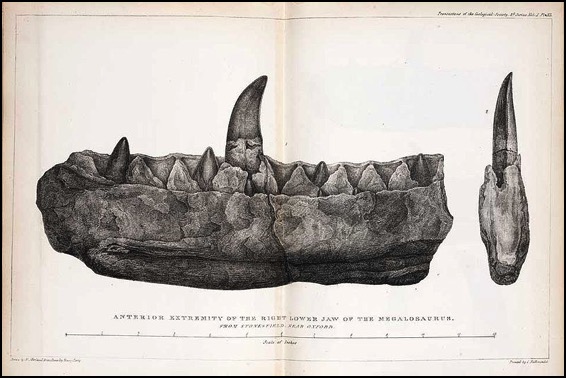Chapter 7:
She Sells Sea Shells…
// Jurassic
In Chapter 7, we discover how the geologist and Dean of Westminster, Dr William Buckland investigated stones associated with the abdomens of Ichthyosaur, as found by Mary Anning - the famous fossil-collector of Lyme Regis. Anning had broken open some of these stones and found that some of them contained fossilised fish scales and bones. In 1829, Buckland concluded that they were fossilised faeces and gave them a name - coprolites. Buckland even inlaid a selection of them into an ornate side-table made especially for his home and much admired by many visitors, unaware of its provenance.

Buckland probably had a great many visitors; aside from his clerical duties, he was a geologist of great skill. Five years before he announced coprolites to the scientific world, he described the first non-avian dinosaur - later named Megalosaurus bucklandii - (above) and discovered the skeleton of what is still the oldest example of homo sapiens (Modern human) to be found in the UK. The 30,000 year old skeleton of the Red Lady of Paviland (actually the ‘lady’ is no such thing, more of a man who died at the approximate age of 21) is also the oldest example of a ceremonial burial in Western Europe.).

Buckland probably had a great many visitors; aside from his clerical duties, he was a geologist of great skill. Five years before he announced coprolites to the scientific world, he described the first non-avian dinosaur - later named Megalosaurus bucklandii - (above) and discovered the skeleton of what is still the oldest example of homo sapiens (Modern human) to be found in the UK. The 30,000 year old skeleton of the Red Lady of Paviland (actually the ‘lady’ is no such thing, more of a man who died at the approximate age of 21) is also the oldest example of a ceremonial burial in Western Europe.).
